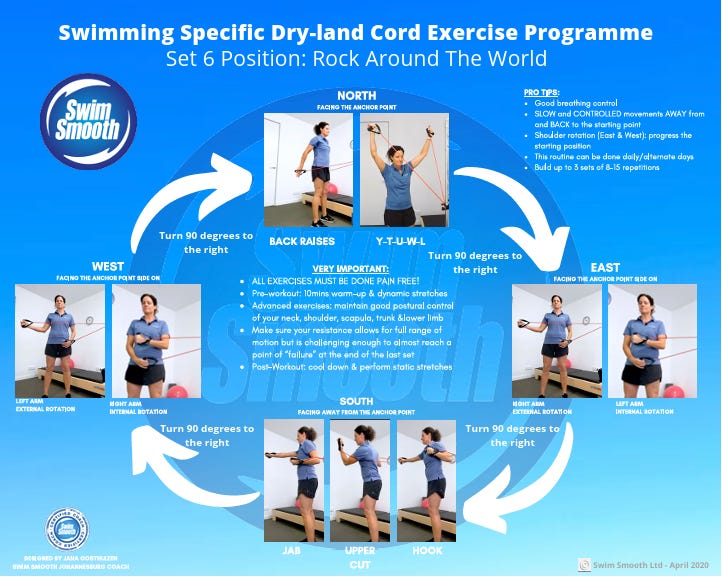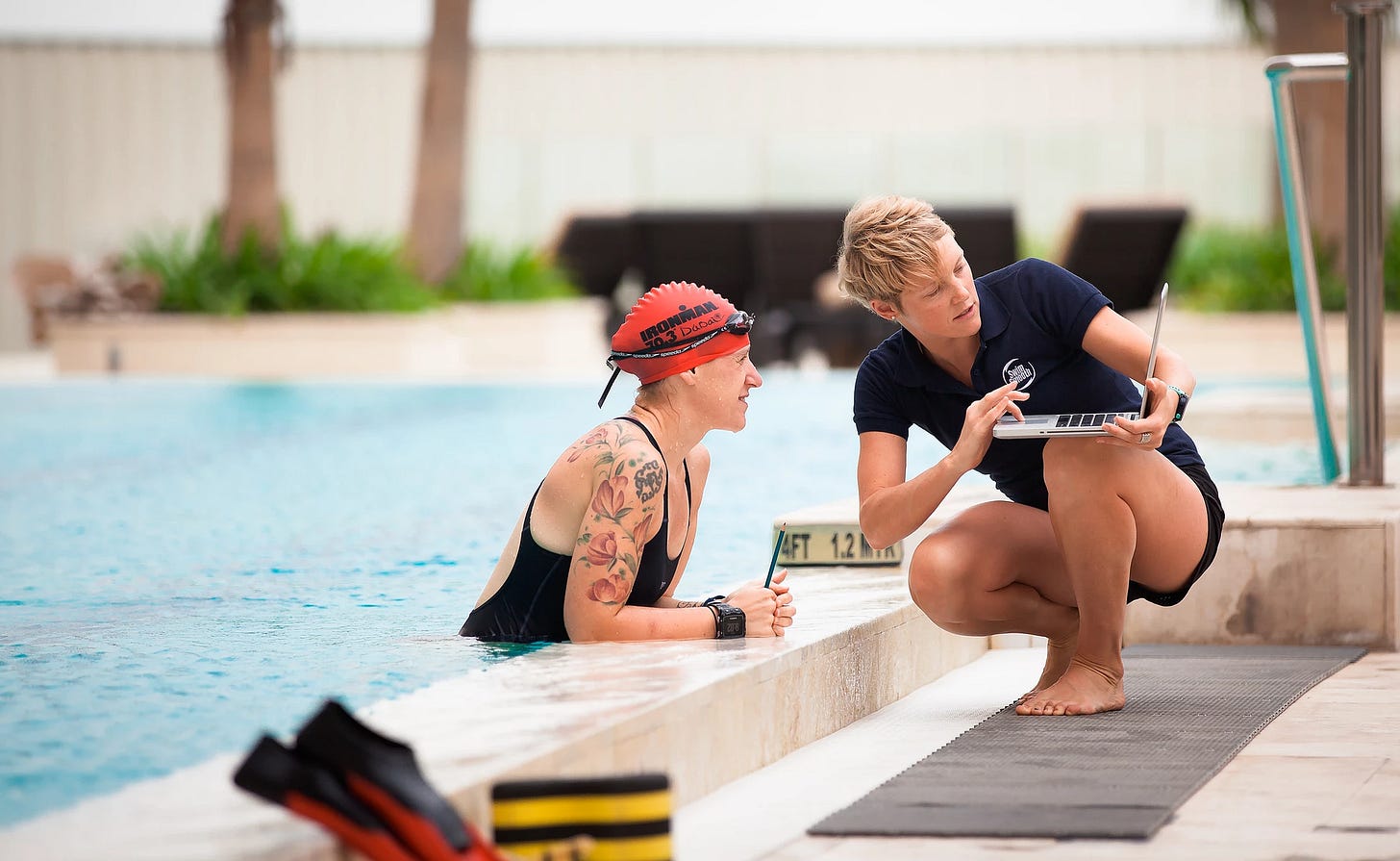🔷 How to Crack the Top 5%—Even If You Didn’t Swim as a Kid!
4 key areas that can help you become the best swimmer you can be, no matter when you started swimming.
Hey Swimmers,
Ever looked at the results sheet and wondered what it would take to stop hovering in the middle of your age group—and start leading the pack?
You’re not alone. Many adult swimmers hit a frustrating plateau. Meanwhile, former junior swim club athletes seem to power ahead effortlessly. We’ve got one such swimmer in the Squad here in Perth at the moment who’s been visiting from the US and it’s been truly amazing to see how—with the right training approach—he’s been able to capitalise on his formative years and is absolutely flying now! But here’s the good news: with a smart, consistent approach, you too can close the gap—and potentially even outpace them.
I’m always reminded of the following video we posted 10 years ago which we’re told has been super inspirational for many of you and is still relevant today. Whilst you’ll want to sit down with a mug of tea or coffee to watch this one (37-mins) it really does highlight what’s possible, as Russ says here:
“Thank you for analyzing not just Megan's stroke, but her progression through training over time - that's very helpful and topic that isn't covered often enough. I'm where Megan was at the start of her training, and I'd be thrilled to make half the gains Megan has earned. Congrats to Megan for her achievement - it shows what rewards can be earned through consistency and commitment over time combined with insightful coaching. Thanks for sharing it with us. I just returned from the pool, but tomorrow brings another morning!”
Russ Green
The exciting news for us? Mega Megan is back in the pool training with the Squad again and rapidly moving up the ranks by following the same tried and true methods.
So, let’s break down the four key areas that can help you break into the top 5% of your age group, no matter when you started swimming.
1. Regain Your “Feel” For The Water
You’ve probably heard swimmers talk about feel for the water. It’s that elusive sense of connection—how to press the water backwards with just enough pressure, at just the right angle, to generate forward motion efficiently.
Kids develop this naturally by splashing, playing, and racing. Adults? Not so much. We often try to overpower the water rather than working with it.
At Swim Smooth, we recommend carving out time each week to rediscover your relaxed, playful side in the water. Sculling, doggy paddle, backflips, lying on the pool floor watching bubbles—it might feel silly, but it builds proprioception and comfort.
🌊 Drill it in: Use a pull buoy and gently scull the water in front of your head. Aim for light pressure—this is about awareness, not strength. Then move into doggy paddle, rolling from the hips with short, backward strokes. Watch the following short clip on Instagram from a session I did with Chris just yesterday to work on this:
2. Improve Your Flexibility & Stabilisation
If you didn’t swim as a child, there’s a good chance your shoulder and ankle mobility are holding you back. Junior swimmers build flexible shoulders and long, pointed, plantar-flexed ankles over years of repetition—and they often keep it into adulthood.
You don’t need to devote hours to stretching, but daily posture work and focused mobility exercises will pay dividends.
🧘♂️ Simple strategy: Incorporate wall angels, chest openers, and ankle circles into your daily routine. Even a few minutes a day adds up over time.
💡 Pro tip: Struggling with shoulder mobility? Try a slightly straighter arm recovery to reduce strain and improve stroke timing—especially helpful in choppy open water.
You can follow our dedicated Dryland program within the GURU for further assistance:
3. Build a Bulletproof Aerobic Engine
This is where former junior swimmers often pull ahead—they’ve done years of base work and can sustain a strong pace all day long.
To catch up, consistency is everything. You don’t need to smash every session, but you do need to show up—ideally 3–5 times per week—with a smart balance of technique, endurance, and threshold work.
Your anchor? CSS training. If you're unfamiliar with Critical Swim Speed, it’s the most time-efficient way to build sustained pace and aerobic capacity. Visit the GURU to calculate your personalised CSS pace.
4. Get Eyes on Your Stroke
Self-coaching has its limits—especially when it comes to technique. Junior swimmers improve under the watchful eye of a coach. Adults often go it alone and unknowingly reinforce bad habits.
If you can, invest in a 1-to-1 video analysis session. Nothing replaces seeing yourself swim from above and below the surface.
If that's not accessible, our Swim Types system within the GURU can help you self-diagnose with the smartwatch you likely already own and correct stroke flaws with tailored drills.
🎯 The key is balance. Don’t fall into the trap of endless drills and “technique-only” sessions. Pair your technical improvements with aerobic development to create a stroke that’s not only beautiful—but durable over race distance.
Final Word: No Junior Background? No Problem.
You may not have swum as a child. You may not have the shoulder mobility or aerobic engine of a former squad swimmer—yet. But that doesn’t mean you can’t progress.
Surround yourself with faster swimmers. Stay consistent. Play, learn, and challenge your body with purpose. If you make swimming a long-term part of your lifestyle—not just a seasonal pursuit—your progress will follow.
And remember, those athletes leading the pack? Many of them are simply doing the basics very well. Now you can too.
🔜 Next week, we’ll be diving into how to master open water navigation—so you stop swimming off course and start swimming smart—another great way of making up some time with your swim! Don’t miss it.
Your Coach, Paul.








